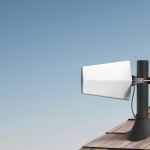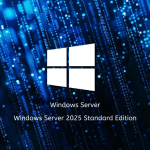The healthcare field has been changed by the development of patient monitoring technology, which also lets providers give more prompt and efficient treatment. Real-time charting, a crucial tool, enables medical personnel to continuously monitor vital signs and other vital data with unprecedented accuracy. This instantaneous access to thorough patient data helps quickly identify changes in health conditions, improves treatment decision-making, and allows smooth communication among care teams. Effective cooperation among healthcare professionals results in tailored treatment programs and better patient outcomes. Data-driven insights enable doctors to improve their methods even more, contributing to a better quality of treatment.
Improved patient monitoring
Including a medical scribe helps with real-time charting, greatly increasing healthcare practitioners’ capacity to monitor patient status continually and precisely. Instantaneous vital signs and other key data capture help practitioners spot changes in a patient’s health, facilitating quick actions. This instant information availability lowers the possibility of problems and enhances general patient outcomes. Furthermore, the combination of alerts and notifications guarantees that healthcare professionals receive any notable variations immediately, encouraging a cooperative patient care approach.
Enhanced treatment decision-making
Access to current patient data enables medical practitioners to make wise treatment decisions more quickly. Real-time data allows doctors to examine trends and patterns influencing patient care, hence guiding more accurate diagnoses and customized treatment regimens. This instantaneous access to thorough health records also helps experts cooperate so that every team member aligns with their approach. Patients thus get more individualized treatment that matches their particular medical histories and present situations, hence improving the efficacy of therapies.
Streamlined communication and collaboration
Real-time charting breaks down silos that could impede good teamwork and promote seamless communication among members of healthcare teams. Instant access to patient data allows nurses, doctors, experts, and other professionals to quickly exchange updates and insights, ensuring everyone agrees on a patient’s treatment plan. This openness improves teamwork and lessens the possibility of mistakes resulting from poor communication. Consequently, the coordinated efforts of the healthcare team result in more effective procedures and enhanced patient experiences, thereby improving the quality of life and health results.
Data-driven insights for better patient outcomes
Real-time data access helps healthcare providers examine patient trends and results more precisely, guiding their decisions. Using analytics from continuous patient information allows doctors to pinpoint areas needing work and effective therapy approaches. This evidence-based approach improves treatment quality and makes proactive treatment plan changes possible, therefore improving the final health outcomes. Moreover, aggregated data might expose patterns in population health that direct practice resource allocation and preventive actions.
Conclusion
Real-time charting and data access in healthcare fundamentally change patient monitoring, treatment decisions, and provider communication. These developments result in quick interventions and customized care to fit specific patient requirements by constantly monitoring vital signs and encouraging cooperation among healthcare personnel. Analyzing patterns and deriving data-driven insights improves the quality of treatment and helps proactive changes to treatment plans, enhancing patient outcomes. Real-time data will always be essential for providing good and quick treatment as healthcare develops.
Lynn Martelli is an editor at Readability. She received her MFA in Creative Writing from Antioch University and has worked as an editor for over 10 years. Lynn has edited a wide variety of books, including fiction, non-fiction, memoirs, and more. In her free time, Lynn enjoys reading, writing, and spending time with her family and friends.















